The American Crow is a common, easily identifiable black bird that lives throughout much of North America. In fact, crows are one of the few corvids that people are not likely to misidentify, because when someone sees a black bird, they automatically assume it’s a crow.
These birds are in the Corvidae family, along with ravens, other species of crows, rooks, magpies, jackdaws, jays, and more. Read on to learn about the American Crow.
Description of the American Crow
Crows are relatively large, black birds, with iridescent feathers. These birds are usually between 15 and 20 in. long, and their wingspan is about 35 in. across. American Crows weigh up to 22 oz. especially if they have been going through the garbage at fast food joints!
These birds are black from their bills to their eyes, feathers, and toes. Their plumage has an iridescent sheen, which appears somewhat blue-colored in the sun.
Interesting Facts About the American Crow
American Crows are incredibly intelligent, and sometimes mischievous, birds. Crows got a bad rap in the past, but learn what makes these birds amazing below.
- Funeral Fanfare – The internet has been abuzz lately about crows holding funerals for their fallen brethren. Crow funerals are not groups of crows mourning their loved ones, though they could potentially mourn the loss of a mate or their offspring. Instead, when crows gather around a dead member of the flock, they are investigating what caused the death so they can learn how to avoid the danger in the future.
- Family Ties – While we might anthropomorphize, or place human emotions, on their “funerals,” American Crows do hold relatively strong bonds with family members. The chicks from previous clutches usually remain with their parents for several years and help them raise their next brood.
- Tool Use – Funeral investigations aren’t the only ingenuitive behavior that these birds participate in. Crows are renowned for their ability to use tools in a variety of different ways. Some crows use sticks and twigs to pry food out of crevices. Other crows use cars as tools to crush hard-shelled nuts. The crows drop the nuts in the road when traffic stops, and then wait until the next red light to collect the now-opened nuts.
- Crafty Foragers – Crows sometimes let other animals do all the hunting for them. Researchers have observed these birds, on multiple occasions, stealing food that other animals hide. Groups of crows even distract other predators and steal the food that they catch.
Habitat of the American Crow
These birds have incredibly wide ranges, but they usually prefer living in open areas, or on the edges of open areas. They are widespread, and inhabit a variety of different ecosystems across their range. Some of their favorite habitats include riparian forest (forest along the edges of rivers and lakes), savanna, meadows, and more.
In natural habitats, they usually avoid dense forests, as they rely on their ability to spot predators ahead of time and alert the rest of the flock. These birds famously live in a wide variety of human-created habitats, including cities, farms, pastures, gardens, parks, dumps, and even cemeteries.
Distribution of the American Crow
As their name might suggest, American Crows live primarily in America. Most of them live in the United States, though they do migrate into Canada during the spring and summer to breed. In Canada, their range extends from the southern border of the Northwest Territories to the United States.
This species is largely absent from the desert regions in the southwest United States. They also live on the French islands of St. Pierre and Miquelon.
Diet of the American Crow
This species is highly opportunistic and feeds on a wide variety of items, both wild and human-made. They are omnivorous, and eat both plant and animal matter. Some of their most common food items include insects and other invertebrates, carrion, human garbage, seeds, eggs, fish, small mammals, frogs, and more.
Especially during the colder months, crows feed on a variety of nuts, seeds, and acorns. These birds also eat from bird feeders on occasion, especially during the winter months. Though they are not strictly scavengers, they do take advantage of carrion, human garbage, and landfills.
American Crow and Human Interaction
These crows are one of the few species that actually benefit from humans in some ways. They are cunning and brave birds, which means they can easily use our garbage, and our crops, as a food source.
In retaliation, humans do sometimes purposefully kill crows. However, their populations are simply so prolific that human interaction does not impact them greatly. The IUCN lists American Crows as Least Concern.
Domestication
Humans have not domesticated crows in any way.
Does the American Crow Make a Good Pet
No, crows do not make good pets. Even though they are smart and charismatic, they are wild birds. Crows are very smart, and need a lot of mental stimulation to live happy lives. In most places, it is also illegal to own an American Crow as a pet. The Migratory Bird Treaty Act protects these crows from harassment and harm by humans.
American Crow Care
In zoos, American Crows live in large enclosures with plenty of space to exercise. Zookeepers feed them a diet that replicates their wild counterparts, with the exception of the numerous French fries and pizza crusts that wild crows inevitably find.
Their diet includes smelt, mice, commercially produced ground carnivore diet, dog kibble, and the occasional egg. Zookeepers also provide a wide variety of toys, puzzle feeders, and positive reinforcement training to keep these birds stimulated.
Behavior of the American Crow
This species is primarily active during the day, or diurnal. Crows are relatively flexible socially. Some crows live in family groups, while others congregate in large flocks.
When feeding at a prolific food source, large numbers of crows congregate together semi-peacefully. They even post a sentry to watch for predators while the other birds feed. Especially in colder regions, large flocks form during the winter to roost and forage together.
Reproduction of the American Crow
Pairs of crows are monogamous, and continue to breed year after year until death. The chicks remain with the family for several years and help their parents care for the newly hatched clutch. Females lay an average of three to five eggs per year, and incubation lasts about two and a half weeks.
The chicks begin learning how to fly when they are about a month old, but remain with their parents for several years. American Crows usually do not begin breeding until they are between two and four years old.
Beliefs, Superstitions, and Phobias About the American Crow
Crows, of any species, tend to get a bad reputation and symbolism across the globe. They are dark birds, and they commonly feed on carrion. During wartimes, people usually do not appreciate seeing their fallen comrades with birds picking at them. Sadly, their bad reputation sometimes means retaliation.
People shoot them for fun, superstition, or in retaliation for eating their crops. Thankfully, their populations are booming and quite unaffected.

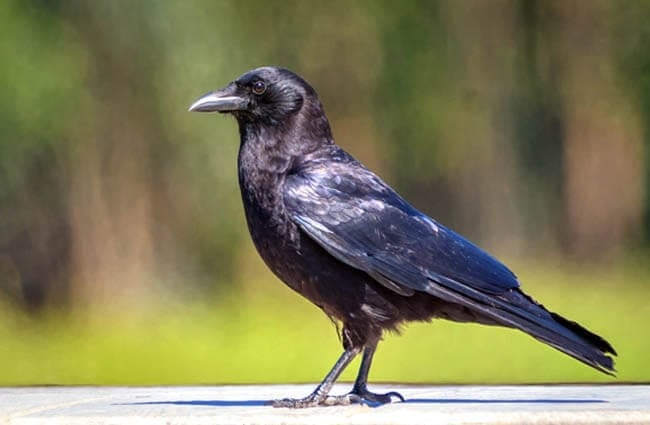
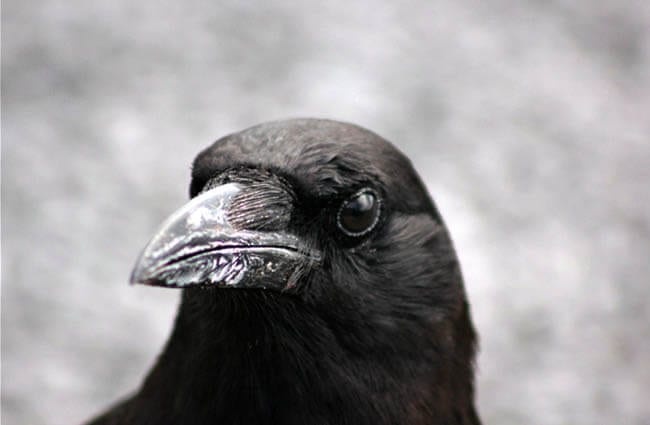

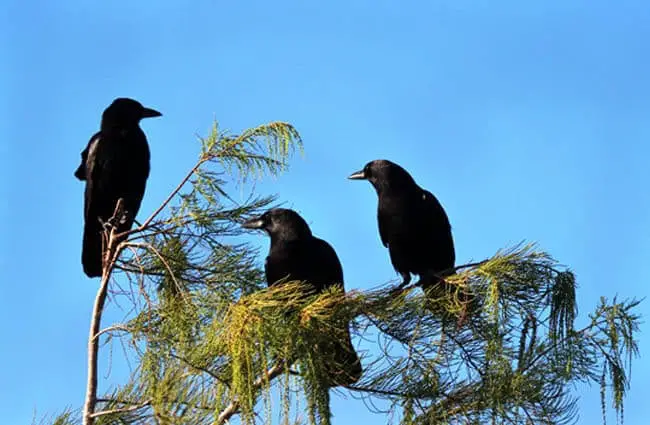
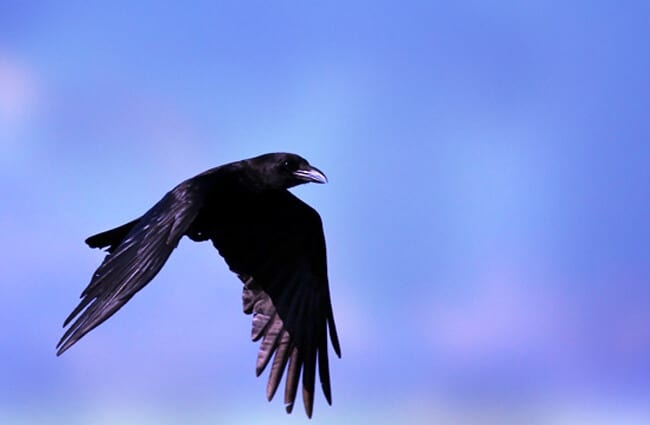



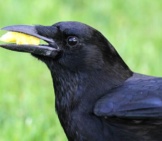


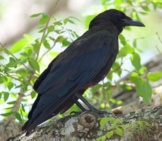
![Red Angus Closeup of a beautiful Red Angus cowPhoto by: U.S. Department of Agriculture [pubic domain]https://creativecommons.org/licenses/by/2.0/](https://animals.net/wp-content/uploads/2020/03/Red-Angus-4-238x178.jpg)












![Red Angus Closeup of a beautiful Red Angus cowPhoto by: U.S. Department of Agriculture [pubic domain]https://creativecommons.org/licenses/by/2.0/](https://animals.net/wp-content/uploads/2020/03/Red-Angus-4-100x75.jpg)

